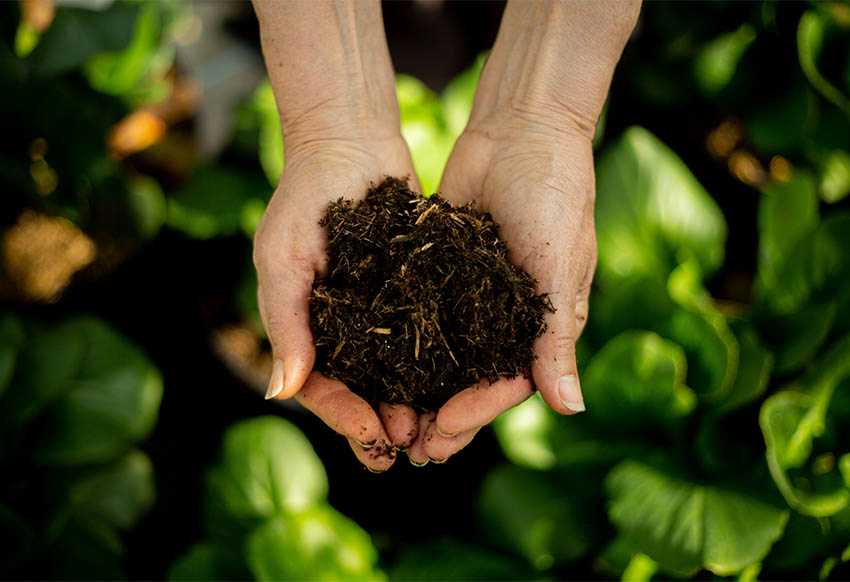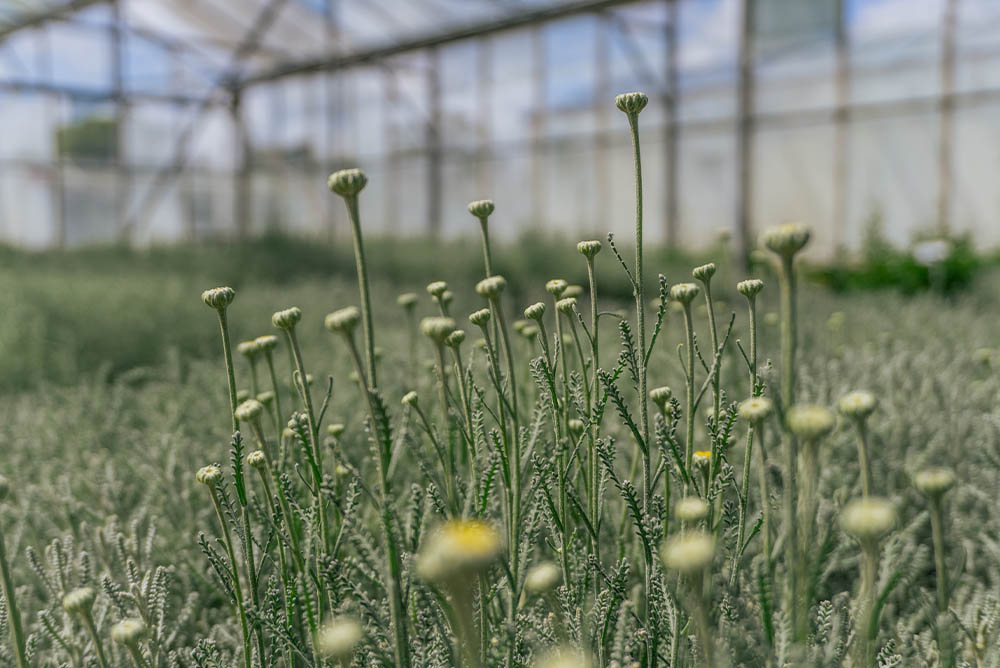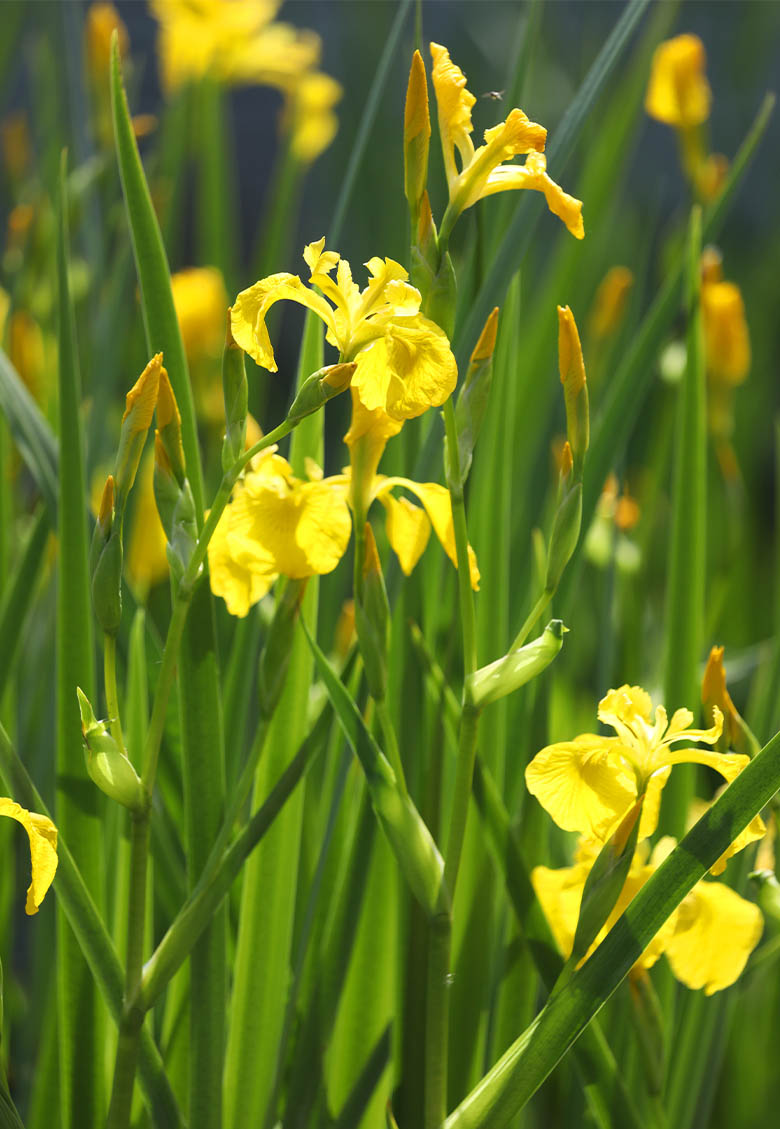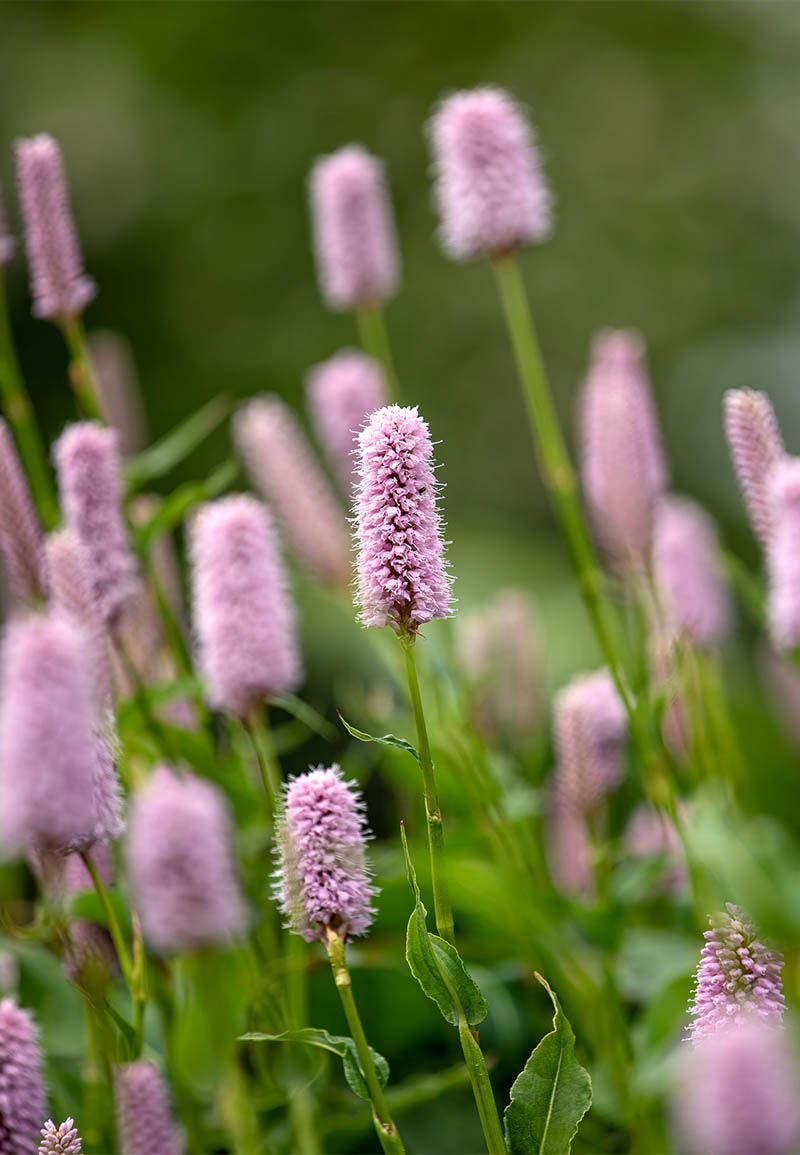Creating a truly sustainable garden
Reducing our environmental impact whilst creating a beautiful green space.
Over recent years, we have seen greater interest in the need for sustainable homes and gardens. This is due to a number of reasons, as individuals are looking to be more environmentally conscious, and to try to take control of the rising cost of living.
Sustainable homes and gardens help us to minimise our environmental impact and can involve energy efficiency, sustainable materials, and waste reduction. We can also bring sustainable practices into our gardens, through water conservation, composting, planting native species, using peat-free growing media, and planting for cooling and shade. These sustainable gardening practices provide many benefits to individuals and the environment. They can reduce our carbon footprint, support biodiversity, improve soil health, and reduce water usage.
Native species
Native plants have developed naturally over time within a specific region. Planting these native perennials, shrubs, and trees within your green space is vital to support biodiversity, as the local wildlife, including birds, animals, insects, and invertebrates, depend on these species for survival. It’s recommended to plant a range of native species which bloom at different times of the year, as this provides a constant food source for our precious pollinators, and brings year-round visual appeal.
Invertebrates are particularly vital, and benefit hugely from native plant species. Unfortunately, when compared to native plants, exotic plants support 20% fewer invertebrates. An interesting way to support invertebrates within your garden is to incorporate a bug hotel. These encourage invertebrates to breed and have a warm, dry space for shelter. Supporting invertebrates can also provide natural pest control; for example, ladybirds help to control the population of aphids. A bug hotel can be built using natural materials; wooden boxes and bricks are useful for the structure, whilst twigs, leaves, bark, dry grass, and pinecones can be used for filling. Autumn is an ideal time to create a bug hotel as plenty of these natural materials are available, and animals are on the hunt for places to hibernate during winter.
Planting native species brings other useful benefits. Once these species are established, they require little maintenance, aside from occasional mulching and pruning to keep them looking their best. They can also be divided every few years for growth rejuvenation, allowing improved access to nutrients. Native species also require much less watering, compared to other, non-native species. This is due to native species being well adapted to the conditions of their environment, including difficult planting areas, such as those with fluctuating water levels. Native species are also more resilient to local pests, which leads to the reduced need for plant feed and pest control – promoting a healthy ecosystem.
Peat-free growing media
Peat is partially composed organic matter that has been formed within peatlands. Peat is a finite resource; it takes a significantly long time to grow, and the annual commercial extraction of peat removes around five hundred years’ worth of growth.
Peatlands are incredibly carbon-rich, and are hugely important, as they sequester around 33% of our global CO₂. Peatlands become damaged when peat is harvested from them, and their stored carbon emits as CO₂ into the atmosphere. This is why it’s vital to use alternatives to peat.
With the government set to introduce a ban on the sale of peated growing media by the end of 2024, and banning its commercial use by 2026, there has never been a better time to switch to peat-free compost.
There are now many options available for growing successfully without the use of peat. Some alternatives to peat are coir, wood fibre, green waste, and rice husks. Provided the soil make up is correct, most species will grow almost identically in peat-free media, compared with their peat-based equivalents. Greenwood is proud to be a 100% peat free grower, having officially eradicated the use of peat on all seven of our nursery sites in late 2023.
Did you know?
Carbon emissions from damaged peatlands contribute to around 5% of the annual human-caused carbon emissions.

Composting
Composting is the process of breaking down organic matter, such as food scraps and garden waste, into a valuable fertiliser, known as compost.
Reducing landfill waste and improving soil health are just a couple of the great benefits that come from composting. During the composting process, important microorganisms and insects do their work to help to decompose the organic matter, that eventually turns into a nutrient-rich fertiliser. Compost is great for improving soil health, as it has three key nutrients – nitrogen, potassium, and phosphorus. Compost has also been shown to increase the water retention capacity in soil.
It has been estimated that a staggering 33% of the world’s food is wasted, and most of this will eventually end up in landfills. This food waste then becomes a source of methane. Methane is a greenhouse gas that traps more heat in the atmosphere than CO2; it’s 80 times more powerful for the first 20 years after it has been released into the atmosphere, and this means it has a detrimental effect on global warming. A way for us to reduce methane is by decreasing the level of waste we have going to these landfills, and composting helps us to achieve this.
Water conservation
To aim for a sustainable garden, it’s vital to have a think about how much water you are currently using to maintain it. Climate change is causing dryer and hotter summers, and our rainfall is becoming less predictable. We should be trying to utilise water as best we can by adapting our garden design, using drought tolerant plant species, and recycling water.
When looking at garden design, reducing the amount of lawn area is key as these require a substantial amount of water to maintain. Alternatives to lawns are natural meadows, gravel gardens, and xeriscaping. Xeriscaping involves designing landscapes to help with reducing or eliminating future watering, and this is possible through planting a range of drought tolerant species amongst mulch, rocks, and soil.
Some examples of drought tolerant plants include:

Euphorbia characias subsp. wulfenii
Euphorbia characias subsp. wulfenii
An upright shrub with showy heads of vibrant, lime green flowers and oblong, grey-green foliage. Euphorbia characias subsp. wulfenii brings structure to borders with its natural, rounded shape and its flowers create a bold feature. It originates from the Mediterranean, and is therefore very tolerant of drought.
Perovskia ‘Blue Spire’
An erect, deciduous perennial with slender, white stems that bear highly aromatic, grey-green leaves and panicles of small, lavender-blue flowers from late summer. Perovskia ‘Blue Spire’ is great for planting en masse alongside pathways and positioned in the middle of sunny borders. Works well with ornamental grasses.
Santolina chamaecyparissus
A small clump-forming shrub with aromatic, finely divided, light grey foliage. Small, button-like, scented yellow flowers appear in summer. Santolina chamaecyparissus is a nice edging plant for a sunny border and adds a lovely splash of colour from July to August.

Santolina chamaecyparissus
If you’d like more recommendations of drought tolerant plants, read our previous blog here.
Even though the focus is on water conservation, this style of garden can truly look the part with a diverse plant selection, rocks, and other natural elements. You can also utilise plant zoning, where specific plants are grouped according to their water needs.
Rain garden planting schemes are an excellent way to conserve water within your green space; these capture rainwater runoff and allow it to naturally infiltrate the soil. Rain gardens can successfully cope with the rainfall from an equivalent surface area of around five times the size of the garden. Rain gardens require well-draining soil, and they should be positioned in a naturally low area of the garden, where rainwater usually collects.
Some examples of suitable plants for a rain garden include:
Iris pseudacorus
A vigorous perennial that forms clumps of green foliage, alongside bright yellow flowers. Looks fantastic when planted within a wildlife garden. Thrives in deep, moist soil, making it ideal for a rain garden.
Persicaria bistorta ‘Superba
A clump-forming, vigorous semi-evergreen perennial with dense spikes of soft pink flowers from June to September, and veined, ovate, pointed, rich green leaves. Persicaria bistorta ‘Superba’ is ideal for the front or middle of a flower border. Prefers moist but well-drained, or poorly-drained soil.
Viburnum opulus
A vigorous native shrub with lobed, maple-like leaves that provide autumn colour. Snowball-like clusters of white, or green tinted flowers appear in April and are followed by translucent red berries. Its flowers are attractive to hoverflies and red berries are a food source for birds.

Iris pseudacorus

Persicaria bistorta ‘Superba’
To find out more about rain gardens, take a look at our rain garden planting inspiration page.
Harvesting rainwater for garden use is another effective way of conserving water, and it can be collected from the rooves of homes and garages if they have gutters with a downpipe. The downpipes can then be connected to a water butt, where the harvested water will be stored. It’s best practice to give water butts a clean once a year as it is possible for them to carry disease; this is why it’s best to use the harvested water on established plants only, rather than young plants which are more vulnerable.
Established plants don’t need high quality tap water that has gone through significant treatment; they can thrive on harvested rainwater. Watering plants at certain times of the day can help to be more resourceful. Watering early in the morning or late at night increases the amount of water that reaches the roots of the plants, due to not evaporating during the daytime heat. Lastly, adding organic matter to plants can reduce watering needs, as it holds onto water for longer, and keeps plants hydrated.
As well as harvested rainwater, using grey water can be beneficial, especially during periods of drought. Grey water is wastewater from plumbing systems, such as washing machines, showers, baths, and sinks. It should only be saved for around 24 hours, to minimise growth of bacteria. Grey water may contain detergent and soap, and although soil has the ability to filter this out effectively, it’s recommended to only use it for a short period of time, when essential. It’s also not advised to use grey water on any edible plants. This method of water conservation is great for the environment as it helps to reduce the strain on sewage treatment facilities.
Cooling and shade
Plants have the ability to cool air temperature through shading surfaces beneath them, as well as through a process called transpiration. Transpiration is where plants pull water from their roots to their leaves, where it then evaporates as water vapour. These processes can reduce the surrounding air temperature by around 1-5°C.
Gardens can be designed to provide natural cooling for your home, and therefore improving energy efficiency. If plants are planted in a strategic way, they can help to keep homes cool from solar heat during summer, whilst still allowing the sun to warm homes during winter. To achieve this, small deciduous trees should be planted close to the south side of the home. Taller trees can be planted close to the southwest or west of the home, at a distance of around 1.5 times the tree’s eventual height. This is to ensure it blocks the sun later in the day, but will also avoid the risk of any leaves, twigs, or branches falling onto the roof.
In addition to trees, shrubs have the ability to reduce energy costs by up to 25%, by providing shade, as well as shielding from harsh blustery winter winds. It’s key to ensure the shrub can cope with highly exposed positions. Climbers are also great for improving energy efficiency. They can be grown up the walls of homes, and provide insulation to help contain heat during winter, in addition to keeping temperatures cooler in the hotter months.
Planting for wellbeing
Research conducted by the Royal Horticultural Society (RHS) found sustainable gardening to be good for individuals who practise it, as well as the environment.
This research was published in ‘Urban Forestry and Urban Greening’, and 83% of its gardening participants found the activity positive for their overall health and wellbeing, including mental health and physical health. Those who stated that they actively supported wildlife, or reduced their own environmental footprint, felt they had higher overall health and wellbeing benefits.
Some other suggested benefits from sustainable gardening include wider or stronger social network bonds incorporating nature connectedness, providing a higher degree of continuous learning, and a sense of extended care-giving to the wider environment. Examples of extended care involve irrigation using a watering can, weeding by hand, and making compost.
There are a huge range of benefits involved in sustainable gardening, which bring value to individuals, wildlife, and the planet. To find out more about our own sustainability initiatives at Greenwood, click here.

